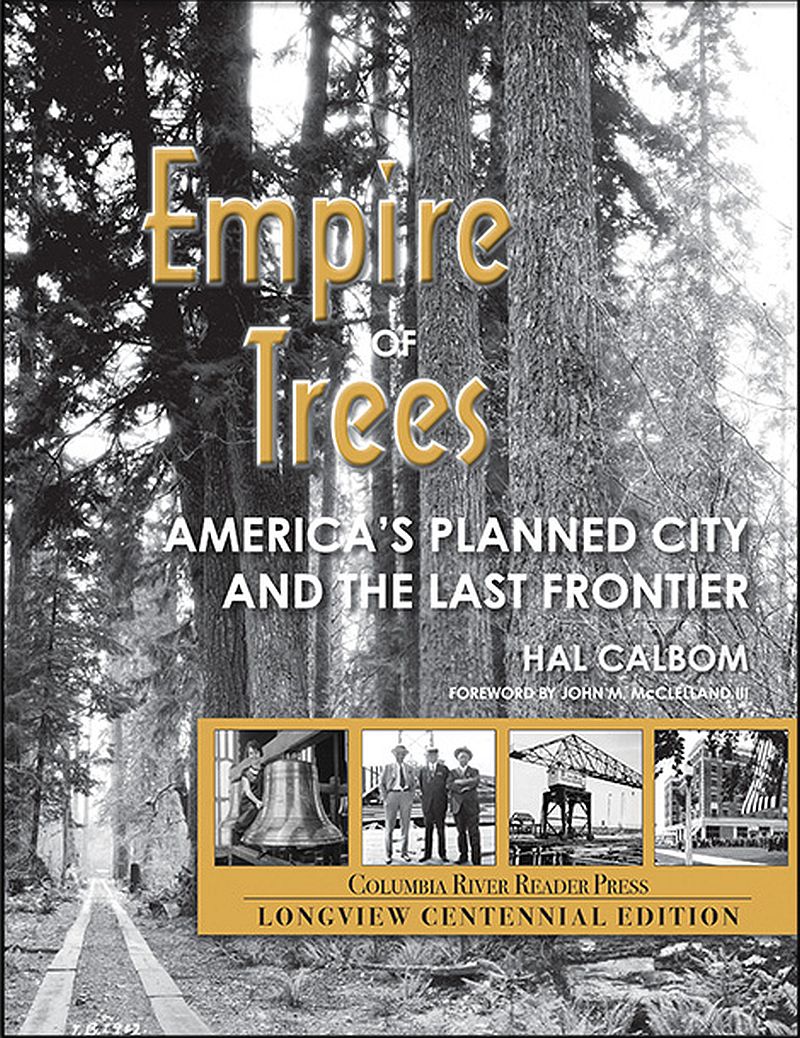Hal Calbom
Columbia River Reader Press

Signs of trouble appeared well before the stock market crash in October, 1929. Two years earlier a sharp drop in construction nationwide had rocked the lumber industry. Unsold inventory crowded the docks […] Most people clung to the single-minded belief that—despite resolutely insisting it was no mere Company Town—in the end the Company could and would support them. It was a dangerous co-dependence. Besides acting as employer and financier, the company was expected to be chief educator, city manager, church and community organizer, all-purpose supplier and savior. Until it wasn’t.
fromEmpire of Trees
We are people of the river
On July 12, 1923, the city of Longview was dedicated in front of the new and grand Hotel Monticello. The hotel’s “majestic Georgian design stood out for miles, like a medieval cathedral luring pilgrims in the Middle Ages.” The dedication was a glittering affair, with speeches and banquets, baseball games and concerts, a regatta on the Columbia, and a grand Pageant of Progress, celebrating the triumph of human will and imagination over nature that had culminated in “The Planned City.” Beneath this shiny show of progress was an inconvenient reality: The town’s sewer lines had not yet been connected, so all the toilets in the majestic hotel were flushing directly into the hotel’s majestic basement. Nature always wins.
This scene which opens Empire of Trees seems symbolic. Once again, humanity’s Grand Vision was humbled by the basics. (It perhaps also portended the city’s longstanding and regrettable reputation for a distinctive odor.)
For Longview’s centennial celebration, native son Hal Calbom has produced an expansive and engaging new history. Beginning with the city’s 1923 dedication and ending with its 2023 high school class graduations, Calbom takes us on a tour of the ten decades connecting these two moments in time.
Rather than a stately chronological procession of events, Empire of Trees is more a kaleidoscope of people, places, and themes. The book’s narrative structure is split into alternating chapters focusing on Then and Now, written with the wit, warmth, and perspective of a journalist fond of his subject.
A generous collection of archival photos from the past are juxtaposed with photos of the present, capturing the ebbs and flows of the city’s first 100 years—its politics, its fashions, the dicey dance between management and unions, the fluctuating markets for timber, and then the mill town’s shift in the late 20th century, seeking a new economic base and a new identity.
And amidst all this, the story of people getting on with their lives as best they could, one day at a time, the days stretching into years, the years into decades, until we have a centennial—a moment to pause and celebrate, yes, but also to reflect on the way we’ve come and who we are as a community.
Hal Calbom and the Columbia River Reader Press have given us a great gift, an attractive aid for community self-reflection, reminding us that history is always Then and Now, ever flowing like the great river that helped place and define this city, and that we are part of that flow. We are part of the great river of time.
This review first appeared in The Columbia River Reader (July 15, 2023.) Reprinted with permission.



